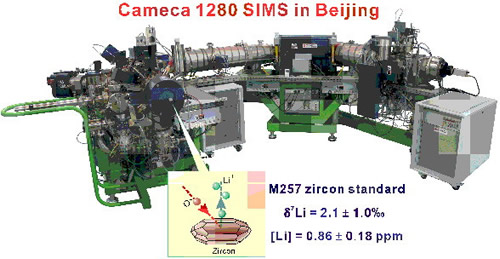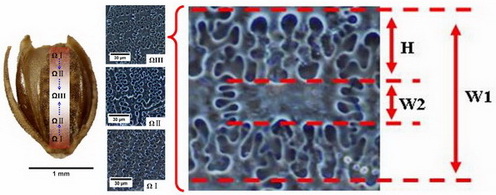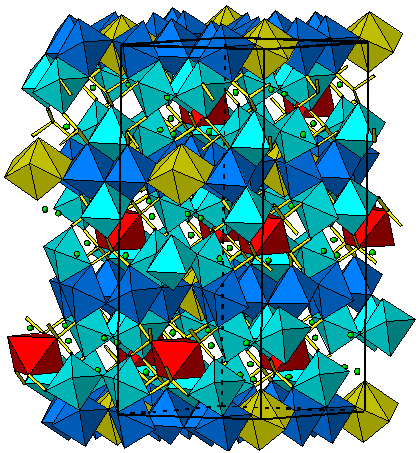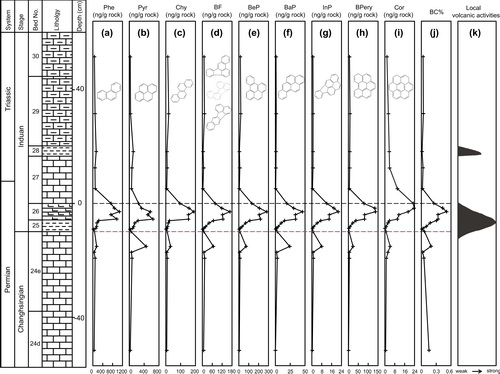|
News Center
|
Highlights
Precise U-Pb zircon dating at a scale of <5 micron by the CAMECA 1280 SIMS using a Gaussian illumination probe[05 23, 2011]Engineer LIU Yu and his team describe a method of precise U–Pb dating for zircons as young as the Jurassic age at a scale of up to <5 mm using the CAMECA ims-1280 SIMS. Further characterization of M257 zircon standard: A working reference for SIMS analysis of Li isotopes[05 20, 2011]Professor LI Xianhua and his team study further characterization of M257 zircon standard. Quantification of hematite from the visible diffuse reflectance spectrum: effects of aluminium substitution and g...[05 16, 2011]Professor LIU Qingsong and his team investigate systematically the effects of Al substitution on the visible diffuse reflectance spectrum (DRS) of hematite by using several sets of synthetic samples. Phytolith Analysis for Differentiating between Foxtail Millet (Setaria italica) and Green Foxtail (Setaria viridis)[05 11, 2011]Postdoctor ZHANG Jianping and his collaborators give a meaningful method of separating foxtail millet and green foxtail using phytolithic analysis. Halaqin volcano-sedimentary succession in the central-northern margin of the North China Craton: products of Late...[05 05, 2011]Vice professor PENG Peng and his team study Halaqin volcano-sedimentary succession in the central-northern margin of the North China Craton. Crystal structure of nanlingite – the first mineral with a [Fe(AsO3)6] configuration[05 04, 2011]Professor YANG Zhuming and his team study the crystal structure of nanlingite. They find that nanlingite is the first mineral with a [Fe(AsO3)6] configuration. Evidence for wildfire in the Meishan section and implications for Permian-Triassic events[05 03, 2011]Postdoctor SHEN Wenjie and his teacher LIN Yangting study polynuclear aromatic hydrocarbons (PAHs) and black carbon (BC) in sediments at the Meishan section to determine whether wildfire activity occurred at the Permian-Triassic (P/Tr) boundary. Revisiting the stratigraphic position of the Matuyama–Brunhes geomagnetic polarity boundary in Chinese loess[04 22, 2011]The boundary of the Matuyama-Brunhes paleomagnetic polarity reversal (MBB) is recorded in the marine isotope stage (MIS) 19 in the marine sediments, corresponding to an interglacial period. However, most of the previous loess reports about the MBB... |
-
SIMSSecondary Ion Mass Spectrometer Laboratory
-
MC-ICPMSMultiple-collector ICPMS Laboratory
-
EM & TEMElectron Microprobe and Transmission Electron Microscope Laboratory
-
SISolid Isotope Laboratory
-
StIStable Isotope Laboratory
-
RMPARock-Mineral Preparation and Analysis
-
AAH40Ar/39Ar & (U-Th)/He Laboratory
-
EMLElectron Microscopy Laboratory
-
USCLUranium Series Chronology Laboratory
-
SASeismic Array Laboratory
-
SEELaboratory of Space Environment Exploration Laboratory
-
PGPaleomagnetism and Geochronology Laboratory
-
BioMNSFrance-China Bio-mineralization and Nano-structure Laboratory












